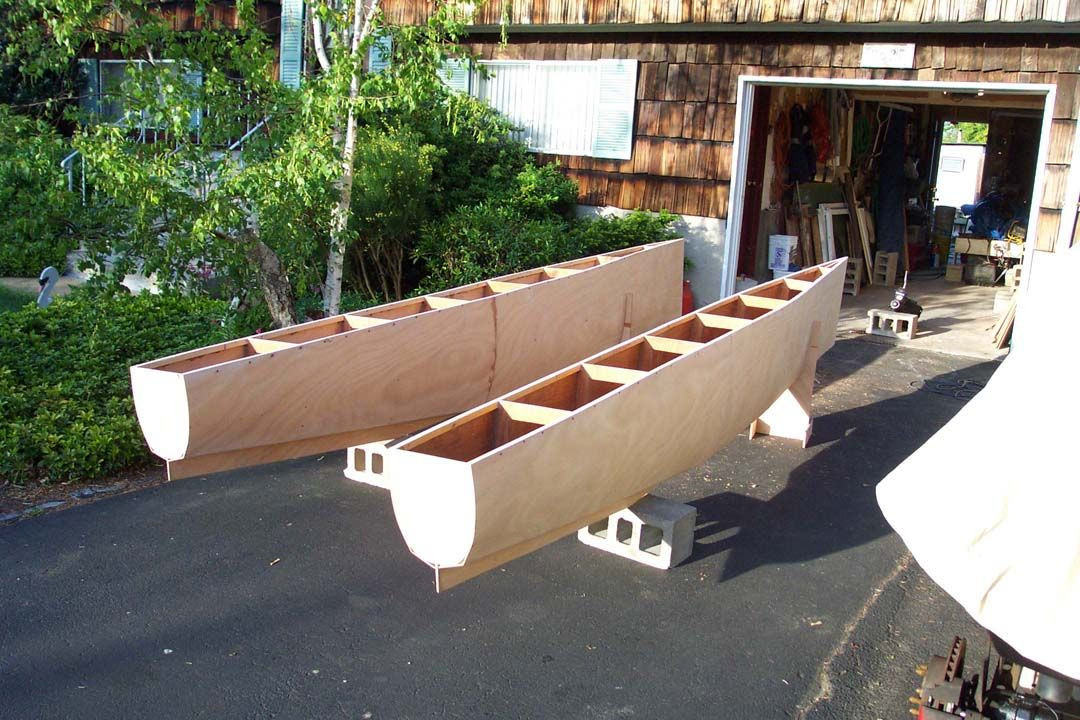Friday, November 22, 2024
Powerboat Plans for Reliable, Safe, and Affordable Builds

Powerboat Plans: Charting a Course for Reliable, Safe, and Affordable Builds
The allure of the open water, the wind in your hair, and the thrill of speed is a potent cocktail that draws many to the world of powerboats. But embarking on the journey of building your own powerboat can be daunting. You'll face a sea of choicesâ€"hull designs, powertrain options, and countless materialsâ€"all while trying to balance reliability, safety, and affordability. This is where detailed powerboat plans become your compass, guiding you through the complexities of construction and helping you build a vessel that's not only a joy to navigate but also a testament to your skills and dedication.
Choosing the Right Plans: Setting Sail on a Successful Build
The first step in any successful powerboat project is selecting the right plans. This decision should be based on your experience level, desired boat size and type, and your budget. Don't simply choose the most visually appealing design. Instead, dig deeper, carefully considering the following:
Experience Level:
If you're a novice builder, begin with a simpler design that offers detailed instructions, clear diagrams, and a proven track record. Plans that break down the construction process into manageable steps, with comprehensive explanations for each stage, are crucial for success. As your experience grows, you can then tackle more complex designs.
Boat Size and Type:
The intended use of your powerboat will dictate its size and type. Are you building a sleek, high-performance racing boat or a leisurely fishing vessel? Are you looking for a nimble runabout or a spacious family cruiser? Powerboat plans for each type are available, and they'll include specific design elements, hull shapes, and structural considerations to meet the demands of their intended purpose.
Budget:
The cost of building a powerboat is influenced by the materials, powertrain, and complexity of the design. Some plans are more expensive due to the use of premium materials or specialized construction techniques. Consider your budget realistically and choose plans that align with your financial capabilities. Research the estimated cost of materials and labor before committing to a particular design.
Building a Reliable and Safe Powerboat: A Framework for Success
Once you've chosen your plans, the construction process unfolds, layer by layer, creating a foundation for your dream boat. Here are some key principles to guide your building process:
Understanding the Plans:
Before you even pick up a tool, study the plans thoroughly. Familiarize yourself with the terminology, construction techniques, and material specifications. If anything is unclear, don't hesitate to reach out to the plan designer or a knowledgeable boat builder for clarification. A clear understanding of the plans is essential to avoid costly mistakes and ensure a safe and reliable build.
Material Selection:
The right materials are the backbone of a sturdy and durable powerboat. Plans typically specify materials, but you can adjust them based on your budget and preferences. Always choose high-quality materials that meet the demands of the intended use. Marine-grade plywood, fiberglass, and epoxy resin are common choices for building powerboats, known for their strength, durability, and resistance to moisture.
Quality Construction:
Building a boat requires meticulous craftsmanship and attention to detail. Take your time, follow the plans precisely, and don't rush the process. Use the right tools and techniques, and ensure that each step is executed correctly. A well-constructed hull, strong frames, and properly installed systems are essential for a safe and reliable powerboat.
Safety First:
Safety should be paramount throughout the entire building process. Wear appropriate safety gear, including eye protection, gloves, and hearing protection. Work in a well-ventilated area, and handle hazardous materials with caution. Once the boat is completed, ensure it meets all applicable safety regulations and is equipped with necessary safety equipment.
Achieving Affordability: Navigating the Costs
Building your own powerboat can be a cost-effective alternative to buying one, but it's crucial to manage your budget carefully. Here are some strategies for keeping your build affordable:
Source Materials Wisely:
Shop around for the best prices on materials, compare quotes from different suppliers, and consider buying in bulk to get discounts. Don't be afraid to negotiate for better pricing, especially for large orders. Local lumberyards, boat supply stores, and online retailers can be good sources for materials.
Utilize Existing Resources:
If you have access to tools and equipment, it can significantly reduce your costs. However, if you need to purchase tools, consider renting or borrowing them rather than buying new, especially for less frequently used items. Look for local workshops or woodworking clubs that may offer access to tools and equipment.
DIY Wherever Possible:
By tackling some of the tasks yourself, you can save on labor costs. Many boat owners successfully build their own engines, wiring, and interior fixtures. However, be realistic about your skills and capabilities, and don't hesitate to seek professional help for tasks that require specialized expertise.
Setting Sail: The Joy of a Self-Built Powerboat
The culmination of your hard work and dedication is a moment of immense satisfaction: launching your self-built powerboat onto the water. Every boat ride becomes a celebration of your craftsmanship, a testament to your dedication, and a reminder of the journey you've taken. And as you navigate the waters, you'll experience a sense of accomplishment that only comes from building something with your own hands.
Powerboat plans offer a roadmap for building your own vessel, enabling you to craft a boat that's tailored to your needs, budget, and dreams. Choose wisely, build with precision, and enjoy the rewarding journey of bringing your own powerboat to life.
No comments:
Post a Comment
Note: Only a member of this blog may post a comment.